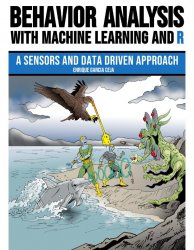|
 Название: Behavior Analysis with Machine Learning and R : A Sensors and Data Driven Approach Название: Behavior Analysis with Machine Learning and R : A Sensors and Data Driven Approach
Автор: Enrique Garcia Ceja
Издательство: Leanpub
Год: 2021
Формат: PDF
Страниц: 374
Размер: 34 Mb
Язык: English
Learn how to leverage the power of machine learning and deep learning to analyze behavioral patterns from sensors data and electronic records. This book shows you how to explore, preprocess, encode, and visualize your data This is the first version (leanpub) of the book. The most recent version is available for free in html at ttps://enriquegit.github.io/behavior-free/ and the print version can be pre-ordered here! In terms of content, all versions are very similar. The newer html and print versions include minor amendments and an additional comic illustration in the last chapter.
This book aims to provide an introduction to machine learning and deep learning concepts and algorithms applied to a diverse set of behavior analysis problems.
The book covers topics and practical aspects within the entire data analysis pipeline—from data collection, visualization, preprocessing, and encoding to model training and evaluation. No prior knowledge in machine learning is assumed. The book covers How To:
Build supervised machine learning models to predict indoor locations based on Wi-Fi signals, recognize physical activities from smartphone sensors and 3D skeleton data, detect hand gestures from accelerometer signals, and much more.
Apply some of the most common techniques to explore, visualize, encode, and preprocess behavioral data.
Use unsupervised learning algorithms to discover criminal behavioral patterns.
Program your own ensemble learning methods and use multi-view stacking to fuse signals from heterogeneous data sources.
Encode your data using different representations, such as feature vectors, time series, images, bags of words, graphs, and so on.
Train deep learning models with Keras and TensorFlow, including neural networks to classify muscle activity from electromyography signals and convolutional neural networks to detect smiles in images.
Evaluate the performance of your models in traditional and multi-user settings.
Train anomaly detection models such as Isolation Forests and autoencoders to detect abnormal fish trajectories.
And much more!
|
Автор: Maurix 4-07-2021, 17:53 | Напечатать
Уважаемый посетитель, Вы зашли на сайт как незарегистрированный пользователь.
|
|
|